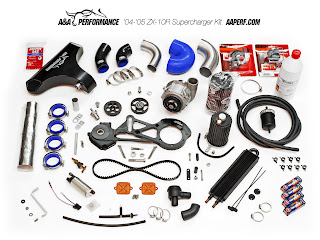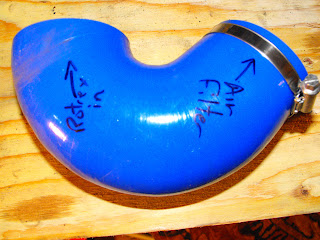There was a boy. Me. I grew up riding small dirt bikes, never really lost the passion for riding but life got in the way for a few years and I was bikeless. One day my wonderful wife simply said,"just buy a damn bike already!"
She'd seen me drool at the riders every spring, knew I loved to ride.
I ended up buying a Honda Valkyrie and rode EVERYWHERE on it. Over the years I gradually made it into more of a sport tourer than Honda ever dreamed....
For comparison, here's a stocker...
Ended up in Seattle, where I met a great friend and fellow rider. He, however, rode a sportbike. A pristine Yamaha R1. After seeing what I did and could do on the Valk, we eventually switched bikes. A revelation. The big six cylinder in the valk was quick, but the R1 was altogether a different beast. I was hooked.
I'd always liked Kawasaki's reputation about the original bad ninja, the 2004 zx-10r. Twitchy, ridiculously powerful, and always willing to bite your ass if you were stupid on it. Sounded like my kind of ride.
Finally saw the black one I was looking for at the right price. I snapped it up, and spent the next 4 years touring, ripping, cruising, monowheeling, and generally enjoying the bike immensely. A set of helibars lifted the grips from wristcrushing territory, it came with a powercommander and ignition retard eliminator. I added a pipe, a seat cowl (as it really isn't a 2-up ride), a heated gear wire harness and rode the wheels off it. The tires, anyway. This thing EATS tires. 185 crank HP, 162ish rear wheel. 480 pounds. Yeah.
My toy...
Glacier National Park
Roadside on local twisty run.
Mount St. Helens
Like everything, though, familiarity breeds contempt. I caught myself eyeing the new crop of sportbikes every year, with more power, better electronics, etc. Problem is I really like my bike, I'm just used to it. More power, now, that'd be fun.
So, more power.
Nitrous - naw. Expensive bottle fills, carry around a scuba tank, limited to short bursts.
Turbo - intake charge heating issues, exponential boost that makes the bike's dyno graph skyrocket with attendant driveability issues, oil/scavenge pump plumbing.
Motor work - Pricey, not a huge bang for buck as these engines are pretty optimized from the factory.
Supercharger - Very few available, drive pulley issues, but linear boost and tuneable.
I run another blog, and back in 2007 a guy named Dan caught my eye. He'd supercharged his VFR.
Beautiful work, quality.
Here's the Post.
He uses the clever Rotrex unit, with it's unique traction fluid drive. Here's a cut-n-paste from the Rotrex site...
Key to the Rotrex supercharger's unique compactness, efficiency, low noise and reliability is its state of the art traction drive technology.
Great speeds and low noise are just some of the advantages of traction drives over traditional gear transmissions. Traction drives transmit power through friction forces between its rolling elements.
Great speeds and low noise are just some of the advantages of traction drives over traditional gear transmissions. Traction drives transmit power through friction forces between its rolling elements.
The Rotrex patented traction drive uses an elastic annulus with a small pre-span to secure contact between the roller planets and the sun shaft with a reasonable force. The patented "ramp effect" increases efficiency and reliability in the transmission by regulating the torque transfer capability on demand through self-adjusting planet geometry.
To enhance performance, the Rotrex traction drive uses a special traction fluid. These fluids are a new family of synthetic hydrocarbon oils and greases offering a series of unique performance advantages. Developed specially for its use in Rotrex superchargers, the SX100 momentarily increases viscosity under high surface pressure, enhancing the traction drive performance by securing the optimum friction between rolling elements while cooling and protecting the system.
This traction drive combined with the latest technology in centrifugal compression, characterized by high adiabatic efficiency and low noise, gives Rotrex superchargers an exceptional competitive edge over any other forced induction solution.
To enhance performance, the Rotrex traction drive uses a special traction fluid. These fluids are a new family of synthetic hydrocarbon oils and greases offering a series of unique performance advantages. Developed specially for its use in Rotrex superchargers, the SX100 momentarily increases viscosity under high surface pressure, enhancing the traction drive performance by securing the optimum friction between rolling elements while cooling and protecting the system.
This traction drive combined with the latest technology in centrifugal compression, characterized by high adiabatic efficiency and low noise, gives Rotrex superchargers an exceptional competitive edge over any other forced induction solution.
Imagine my surprise when in 2009 he announced he was developing a blower kit for the zx-10r!
What you get...
What it does....
Yep, 220+RWHP
And, it hides under the stock fairings.
IN!
The rest of this blog will chronicle the installation of the Rotrex supercharger kit on a 2004 Ninja ZX-10r.




















































